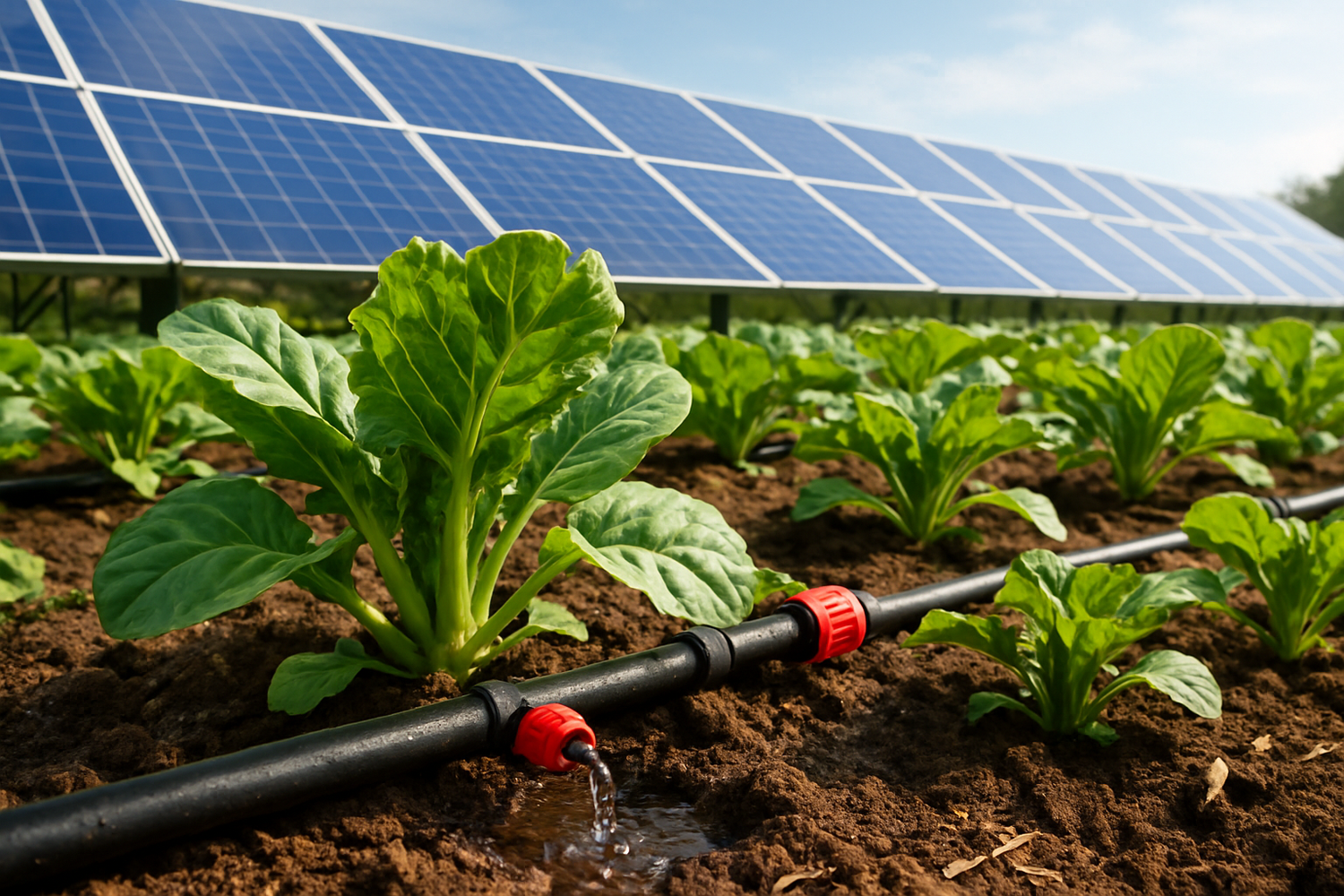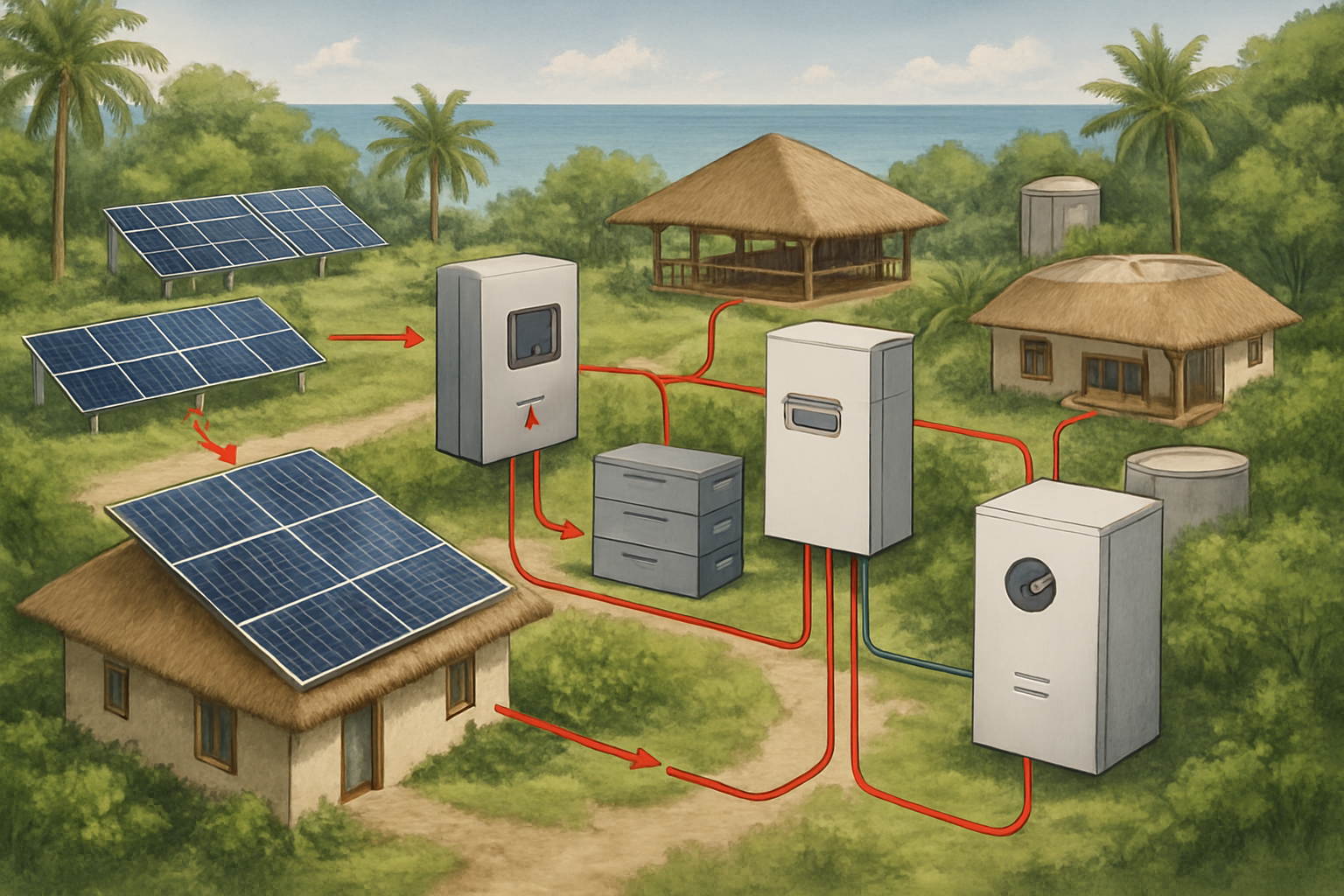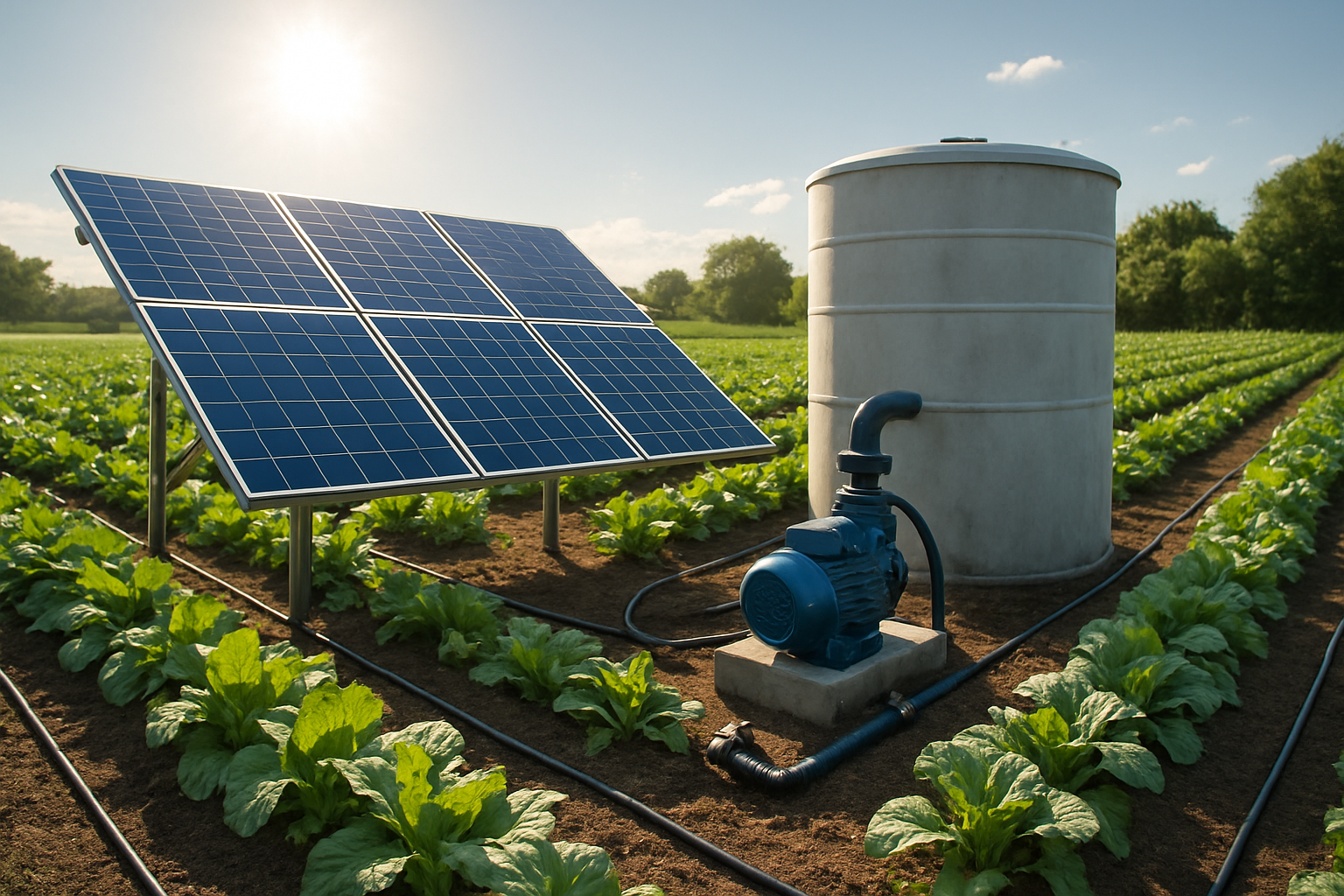Precision agriculture is evolving, and at its heart is the need for efficient resource management. A solar-powered drip irrigation system represents a significant step forward, combining renewable energy with water conservation. This technology provides a reliable and cost-effective method for watering crops, moving agriculture toward greater sustainability and energy independence. As we look toward 2025, understanding the financial and operational dynamics of these systems is crucial for any forward-thinking agricultural enterprise.

Understanding the Core of Solar Drip Irrigation
A solar-powered drip irrigation system is a straightforward, yet powerful, setup. It harnesses sunlight to power a pump, which delivers water directly to the roots of plants through a network of pipes and emitters. This targeted approach minimizes water loss from evaporation and runoff.
Key System Components
- Solar Panels: These capture sunlight and convert it into direct current (DC) electricity. The consistent drop in solar panel prices has made these systems more accessible than ever.
- Solar Water Pump: The heart of the system, this pump uses the electricity generated by the panels to draw water from a source like a well, river, or reservoir.
- Solar Inverter/Controller: An inverter converts DC electricity to alternating current (AC) if an AC pump is used. A controller manages the system, protecting the pump from damage and optimizing its performance based on the solar energy available.
- Energy Storage System: While not always required, incorporating a battery storage solution, particularly one using high-performance Lithium Iron Phosphate (LiFePO4) batteries, is a game-changer. It stores excess energy generated during peak sun hours. This stored power ensures the irrigation system can operate during cloudy periods or even at night, providing ultimate control over watering schedules.
- Drip Irrigation Network: This includes pipes, tubing, and emitters that deliver water slowly and precisely to each plant.
Analyzing Solar Drip Irrigation Costs in 2025
The financial viability of a solar powered drip irrigation system hinges on a clear understanding of its costs. These can be broken down into initial setup and long-term operational expenses.
Initial Investment Breakdown
The upfront cost is the primary consideration. This includes the hardware and installation. According to a recent report, the global weighted average total installed cost for utility-scale solar PV has seen a dramatic decrease over the last decade. *According to IRENA's Renewable Power Generation Costs in 2024, the total installed cost of utility-scale solar PV fell by 82% between 2010 and 2024.* While agricultural systems differ in scale, they benefit directly from these same cost reduction trends in module manufacturing and component technology.
Here is a sample breakdown of initial costs for a small-to-medium scale system:
| Component | Estimated Cost Percentage | Notes |
|---|---|---|
| Solar Panels | 35% - 45% | Cost varies with efficiency and brand. Prices continue to trend downward. |
| Pump & Controller | 20% - 30% | Depends on the pump's capacity and the depth of the water source. |
| Energy Storage (LiFePO4 Battery) | 15% - 25% | Optional but recommended for maximizing ROI and system reliability. |
| Piping, Emitters & Fittings | 10% - 15% | Cost depends on the size and layout of the irrigated area. |
| Installation & Labor | 5% - 10% | Can be a DIY project for smaller setups, but professional installation is recommended. |
Long-Term Operational Expenses
One of the most attractive features of solar irrigation is the low operational cost. Once installed, the fuel—sunlight—is free. This contrasts sharply with diesel-powered pumps, which have high, unpredictable fuel and maintenance costs. Maintenance for a solar system is minimal, typically involving cleaning the panels and occasional checks of the pump and electronics. This shift eliminates reliance on volatile fossil fuel markets and reduces the carbon footprint of agricultural operations.
Projecting Crop Yields and System Performance
The ultimate measure of success for any irrigation system is its impact on crop yields. Solar drip irrigation excels in this area by optimizing the two most critical inputs: water and energy.
Enhanced Water Efficiency and Crop Health
Drip irrigation can reduce water consumption by up to 70% compared to traditional flood or sprinkler methods. By delivering water directly to the root zone, every drop is used effectively. This precision prevents the water stress that can stunt growth and reduce yields. Consistent watering, made possible by a solar system (especially one with battery storage), ensures that crops receive the moisture they need, when they need it, leading to healthier plants and more uniform growth.
Quantifying the Increase in Yields
Farms that switch to solar drip irrigation often report significant increases in productivity. While the exact percentage varies by crop, climate, and soil type, yield improvements of 20% to 90% are commonly cited. This boost in output directly translates to higher revenue per hectare. Furthermore, the ability to cultivate high-value crops that require precise water management becomes possible, opening new market opportunities for farmers.
Calculating the Payback Period and ROI
An investment in a solar powered drip irrigation system is a strategic financial decision. Calculating the payback period helps clarify the long-term value.
Factors Influencing Your Payback Period
The time it takes to recoup the initial investment depends on several variables:
- Cost of the system: Higher initial costs will extend the payback period.
- Savings on fuel/electricity: The higher your current energy bills, the faster the payback.
- Increase in crop revenue: Higher yields and better crop quality accelerate your return on investment.
- Government incentives: Subsidies, tax credits, or grants for renewable energy can significantly shorten the payback time.
- Sunlight availability: Regions with more sunny days will generate more power, increasing the system's value.
The Critical Role of Energy Storage
Integrating a reliable energy storage system, such as one built with robust LiFePO4 batteries, is a key trend for 2025. It transforms a solar irrigation setup from a daytime-only operation into a 24/7 asset. This capability allows for pre-dawn watering to minimize evaporation or supplemental irrigation during critical growth stages, regardless of weather. This level of control directly impacts yield and quality, thereby shortening the payback period and maximizing the overall return on investment. It's a crucial component for achieving true energy independence on the farm.
A Forward Look at Agricultural Energy
The trends for 2025 are clear. Solar panel costs are expected to continue their downward trajectory, while system efficiency improves. The combination of solar power with precision drip irrigation is no longer a niche concept but a mainstream strategy for profitable and sustainable farming. These systems offer a powerful solution to rising energy costs and water scarcity.
By investing in a solar-powered drip irrigation system, agricultural producers gain control over their energy and water resources. This leads to reduced operational costs, increased crop yields, and enhanced resilience against climate and market volatility. It is a practical investment in the future of your farm's productivity and profitability.
Disclaimer: This information is for educational purposes only and does not constitute financial or investment advice. You should consult with a qualified professional before making any investment decisions.





Leave a comment
All comments are moderated before being published.
This site is protected by hCaptcha and the hCaptcha Privacy Policy and Terms of Service apply.